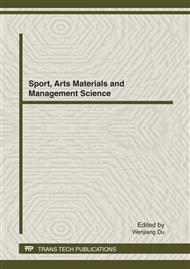[1]
Okazaki Y., Kitahara T. NC Micro-lathe to Machine Micro-parts. " Proceedings of ASPE, s 15th Annual Meeting, 2000, 22: 575-578.
Google Scholar
[2]
Lu Z., Yoneyama T. Micro cutting in the micro lathe turning system., International Journal of Machine Tools and Manufacture, 1999, 39: 1171-1183.
DOI: 10.1016/s0890-6955(98)00092-3
Google Scholar
[3]
Ito S., Iijima D., Hayashi A., Aoyama H., Yamanaka M. Micro Turning System: A Super Small CNC Precision Lathe for Microfactories. " Proceedings of ASPE, s 16 Annual Meeting, 2002, 27: 295-298.
Google Scholar
[4]
Loffler F. Design of a Small Precision Lathe., Proceedings of the EUSPEN International Topical Conference, Aachen, Germany, 2003: 81-84.
Google Scholar
[5]
Bae Y.H., Ko J.K., Chung B.M., Kim H.S. Micro Machining with Micro Turning Lathe. " Proceedings of ASPE, s 16th Annual Meeting, 2001: 157-160.
Google Scholar
[6]
Kurita T., Watanabe S., Hattori M. Development of hybrid micro machine tool., Proceedings EcoDesign 2001: Second International Symposium on. Environmentally Conscious Design and Inverse Manufacturing, 2001: 797-802.
DOI: 10.1109/ecodim.2001.992470
Google Scholar
[7]
Maekawa H. and Ishikawa Y. Development of a High-speed Desktop Milling Machine. " Proceedings of ASPE, s 16th Annual Meeting, 2001: 121-124.
Google Scholar
[8]
Ruiz-Huerta L., Caballero-Ruiz A., Marin-Aguilar E., Velasco-Herrera G., Baidyk T. and Kussul E.. Parallelogram Micromachine for Low Cost Micromechanics., Proceedings of IMECE04, (2004).
DOI: 10.1115/imece2004-62186
Google Scholar
[9]
R. Ramesh, M.A. Mannan, A.N. Poo. Error compensation in machine tools — a review Part I: geometric, cutting-force induced and fixture dependent errors. International Journal of Machine Tools & Manufacture 2000, 40: 1235–1256.
DOI: 10.1016/s0890-6955(00)00009-2
Google Scholar
[10]
N.A. Barakat, M.A. Elbestawi , A.D. Spence. Kinematic and geometric error compensation of a coordinate measuring machine. International Journal of Machine Tools & Manufacture 2000, 40: 833–850.
DOI: 10.1016/s0890-6955(99)00098-x
Google Scholar
[11]
Chana Raksiri, Manukid Parnichkun. Geometric and force errors compensation in a 3-axis CNC milling machine. International Journal of Machine Tools & Manufacture, 2004, 44: 1283–1291.
DOI: 10.1016/j.ijmachtools.2004.04.016
Google Scholar
[12]
Y.Y. Hsu, S.S. Wang. A new compensation method for geometry errors of five-axis machine tools. International Journal of Machine Tools & Manufacture , 2007, 47: 352–360.
DOI: 10.1016/j.ijmachtools.2006.03.008
Google Scholar


